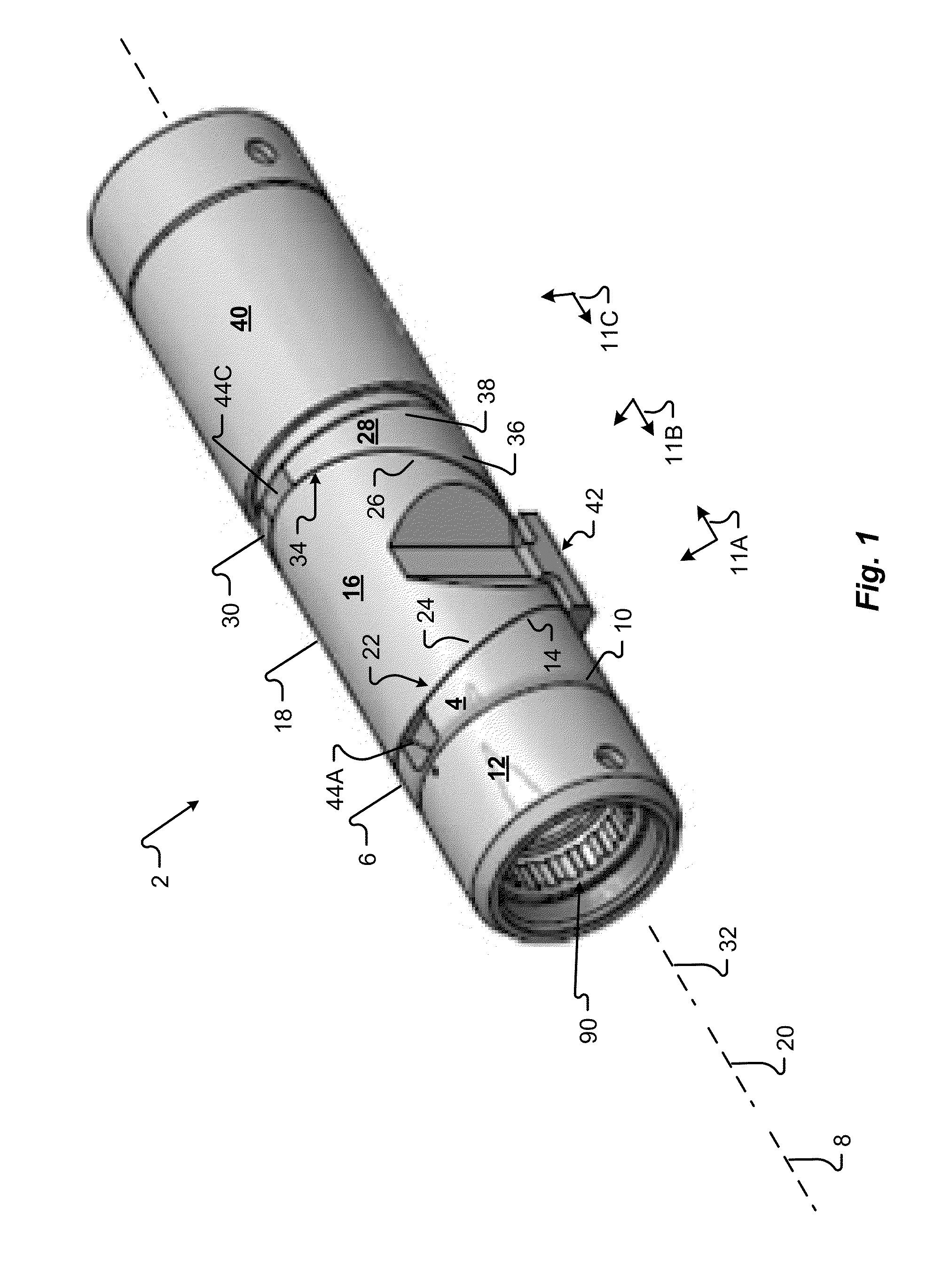Cable assembly backshell
a backshell and cable technology, applied in the direction of coupling device connection, line/current collector details, coupling device engaging/disengaging, etc., can solve the problems of limiting the usefulness of the coupling device, increasing the cost of inventory and storage space, and design further complicating the problem of inventory and control, so as to reduce the requirement of inventory and improve the effect of efficiency
- Summary
- Abstract
- Description
- Claims
- Application Information
AI Technical Summary
Benefits of technology
Problems solved by technology
Method used
Image
Examples
Embodiment Construction
[0049]Referring now to FIG. 1, a rotatable cable assembly backshell 2 of one embodiment of the present invention is illustrated in a straight configuration. The backshell 2 has a connector piece 4 with a first cylindrical body 6 generally extending along a first longitudinal axis 8. The first cylindrical body 6 has a first hollow interior and a first end 10 oriented at an angle 11A of approximately 90° to the first longitudinal axis 8. The first end 10 is interconnected to a connector head or cable connector 12, which in FIG. 1 is adapted to interconnect to a fiber optic cable. Alternatively, a cable connector 12 adapted to interconnect to a copper cable may be interconnected to the cable assembly backshell 2. A cable adapter 90 of one embodiment of the present invention is interconnected to the cable connector 12. Cable adapters 90 of different configurations adapted to function with cables of different sizes and / or different types (such as fiber optic cables or copper cables) may ...
PUM
| Property | Measurement | Unit |
|---|---|---|
| angle | aaaaa | aaaaa |
| angle | aaaaa | aaaaa |
| angle | aaaaa | aaaaa |
Abstract
Description
Claims
Application Information
 Login to View More
Login to View More - R&D
- Intellectual Property
- Life Sciences
- Materials
- Tech Scout
- Unparalleled Data Quality
- Higher Quality Content
- 60% Fewer Hallucinations
Browse by: Latest US Patents, China's latest patents, Technical Efficacy Thesaurus, Application Domain, Technology Topic, Popular Technical Reports.
© 2025 PatSnap. All rights reserved.Legal|Privacy policy|Modern Slavery Act Transparency Statement|Sitemap|About US| Contact US: help@patsnap.com



